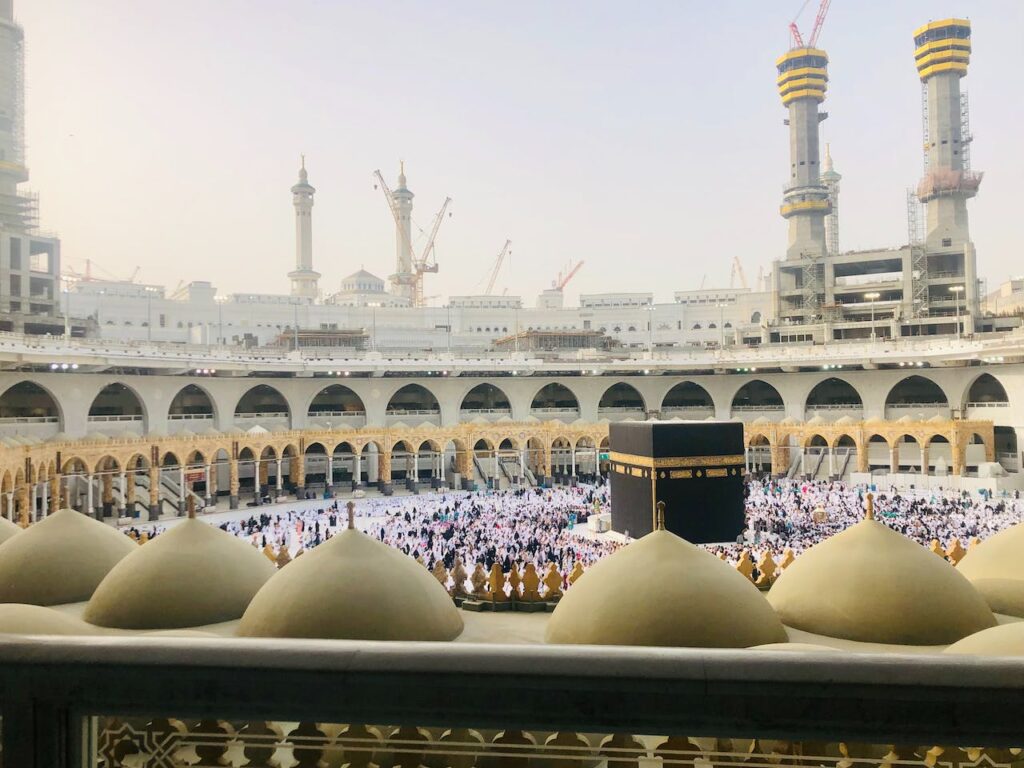Safa and Marwa, the two hills located within the precincts of the Grand Mosque in Mecca, hold immense spiritual significance for Muslims around the world. As part of the ritual of Sa’i during Hajj and Umrah, pilgrims walk between these hills, reenacting the journey of Hajar, the wife of Prophet Ibrahim (pbuh). In this article, we will explore 7 fascinating facts about Safa and Marwa, shedding light on their historical, religious, and symbolic aspects, and deepening our understanding of this cherished pilgrimage ritual.
7 Facts About Safa and Marwa (Sa’i)
Here are the most 7 fascinating facts about Safa and Marwa:
1. Safa and Marwa Have a Rich Historical Background
According to Islamic tradition, Hajar, while searching for water for her infant son Ismail (pbuh), ran between the hills of Safa and Marwa seven times until the miraculous spring of Zamzam emerged.
In addition, This act of Hajar’s perseverance and trust in Allah’s providence became an integral part of the pilgrimage rituals.
2. It’a a Ritual of Umrah and Hajj
Performing Sa’i, the act of walking between Safa and Marwa is an obligatory ritual of both Hajj and Umrah. Pilgrims complete this ritual after the Tawaf of the Kaaba, demonstrating their submission and devotion to Allah.
3. You Will Walk Around 450 Meters
The distance between Safa and Marwa is approximately 450 meters (1,480 feet). The area is enclosed within the Grand Mosque, and the hills themselves are not physically prominent.
Today, they are represented by two green-lit areas with signs indicating their locations.
4. No Worries About High Temperature
To facilitate the Umrah and Hajj, a covered passageway known as the Mas’a is constructed, connecting the hills of Safa and Marwa. The passageway is air-conditioned and spans the distance between the two hills, providing pilgrims with a comfortable and convenient path for their Sa’i.
5. You Can Read the Quran and Dua
Pilgrims are encouraged to engage in remembrance of Allah, recite supplications, and make personal prayers during their Sa’i between Safa and Marwa.
Moreover, This sacred space offers an opportunity for reflection, seeking forgiveness, and seeking blessings from the Almighty.
6. It Has a Great Historical Significance
Although the hills of Safa and Marwa are not physically prominent today, their symbolic importance is recognized and preserved. The green-lit areas and the covered passageway allow pilgrims to reenact the historical journey of Hajar, maintaining a connection with the past.
The act of Sa’i between Safa and Marwa holds profound spiritual lessons.
7. Accessibility for People with Disabilities
The Mas’a passageway and the journey between Safa and Marwa are made accessible to people with disabilities. Ramps, elevators, and other facilities are available to ensure that individuals with physical challenges can participate in the Sa’i ritual.
Recommended Acts During Safa and Marwa
There are many recommended acts during Sa’i. For example:
- It is recommended for men to increase their pace between two specific markers, called the green lights, known as Ramal.
- However, women maintain a regular walking pace throughout Sa’i.
- This practice is a symbolic representation of Hajar’s frantic search for water.
- Seek forgiveness, ask for blessings, and express gratitude to the Almighty.
- Take moments of reflection during your Sa’i between Safa and Marwa.
- Carry a pocket-sized Qur’an or use a Qur’an app on your mobile device.
- Recite verses from the Qur’an as you walk between Safa and Marwa.
- Use this time to cleanse your heart and seek spiritual purification.
- Maintain a state of mindfulness and refrain from engaging in idle talk or unnecessary conversation during your Sa’i.
Conclusion
In conclusion, Safa and Marwa hold a significant place in the hearts of Muslims worldwide. Exploring these ten fascinating facts deepens our appreciation for the historical, religious, and symbolic aspects of these sacred hills.
May the journey between Safa and Marwa serve as a source of inspiration and spiritual enlightenment for all pilgrims.






